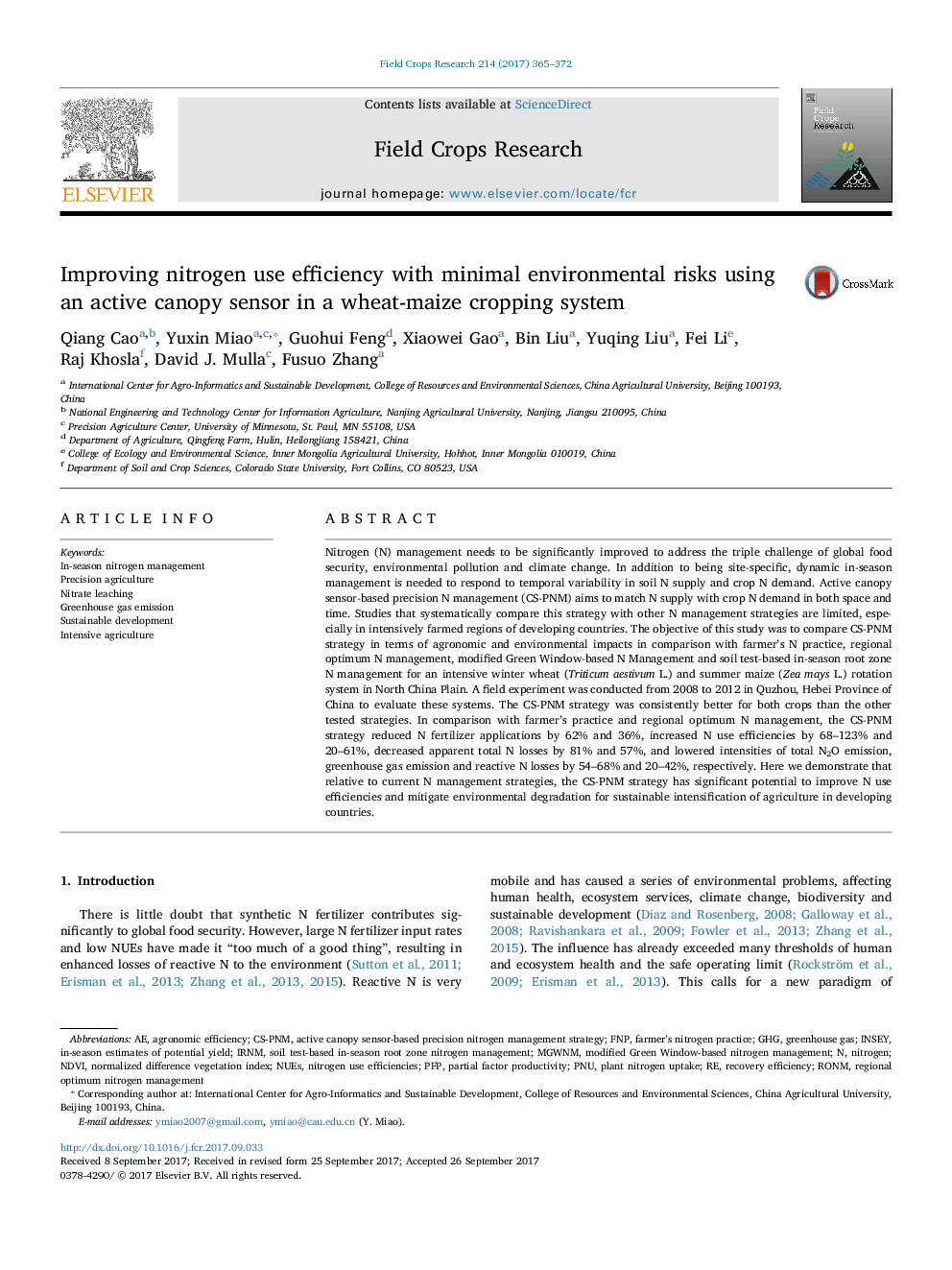ترجمه فارسی عنوان مقاله
بهبود بهره وری استفاده از نیتروژن با حداقل مخاطرات زیست محیطی با استفاده از یک سنسور فعال سایبان در یک سیستم برداشت گندم-ذرت
عنوان انگلیسی
Improving nitrogen use efficiency with minimal environmental risks using an active canopy sensor in a wheat-maize cropping system
| کد مقاله | سال انتشار | تعداد صفحات مقاله انگلیسی |
|---|---|---|
| 93971 | 2017 | 8 صفحه PDF |
منبع

Publisher : Elsevier - Science Direct (الزویر - ساینس دایرکت)
Journal : Field Crops Research, Volume 214, December 2017, Pages 365-372

